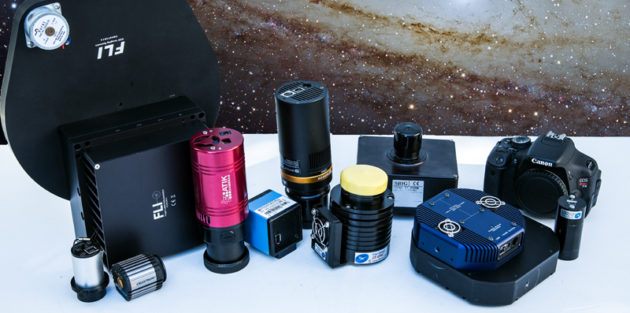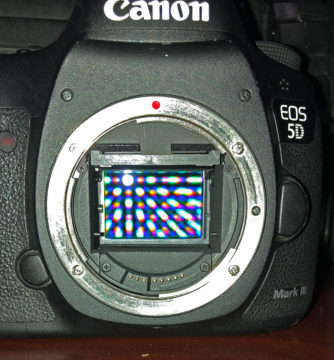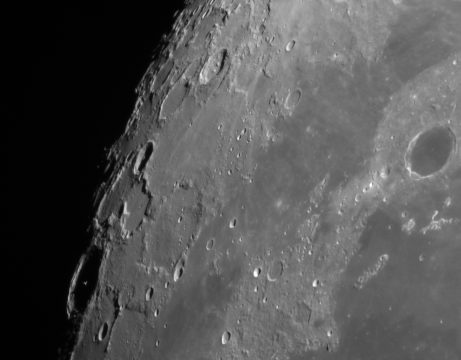Sure, the days of the CCD are numbered, but don't start planning the funeral just yet.
The recent news that OnSemi will discontinue production of CCD sensors (formerly made by Kodak) next year sent shockwaves through the amateur astronomy community. Many proclaimed the end of CCDs in astrophotography.
But not so fast! Camera manufacturers are stockpiling CCDs, so they are still going to be available for awhile, and Sony is still planning to make CCD sensors until 2025. That’s another five years, and the stockpile from that will last a few more years still. So yes, some hot properties on the CCD market are going to disappear sooner than we’d like, but CCDs are still going to be widely available for astrophotography for some time to come.

Richard S. Wright Jr.
So, which one should you use? The answer isn't straightforward — there are pros and cons to both. I could use some graphs and formulas to show you that CCDs outperform CMOS, but that would be both silly and slightly dishonest. The question is really more nuanced — it's more like asking which is better, steak or hamburger? I love steak too, but sometimes I’m really in the mood for a good hamburger. Who hasn’t had a lousy steak? Who hasn’t had an amazing hamburger? CCD and CMOS cameras are the same — really.
First, it's widely claimed — and it's true — that CMOS technology is catching up to CCDs. But they haven't caught up yet. While you could easily cherry pick some counterexamples, in general it's still objectively the case that CCDs are better suited for low-light and scientific imaging purposes, especially astrophotography.
What’s been slowly shrinking over the years is the how much better CCDs are than CMOS. There is no reason to think that, at least eventually, this gap could completely close. The lower cost of CMOS is an important factor. CMOS technology has certainly made imaging vastly more affordable, and a high-end CMOS camera can deliver better results than a low-end CCD camera if your goal is photography.
There's also no question that CMOS technology can deliver excellent high-quality images. For example, most DSLRs are CMOS-based, and they represent the pinnacle of consumer and professional imaging technology today.
That said, low-end CMOS cameras are still really terrible, just as we’ve seen our share of terrible low-end CCD cameras. As always, really cheap cameras perform like . . . really cheap cameras. At the low-cost point, which sensor technology is employed only plays a minor supporting role in performance.

Richard S. Wright Jr.
And when it comes to scientific imaging and astrophotography, CMOS technology still has some significant challenges to overcome. The biggest of these are non-linearity and amplifier glow. These issues are being taken seriously by manufacturers — the very ones that are planning to discontinue CCD production. Of course, things like amp glow, pattern noise, and non-linearity can easily be glossed over or manually corrected for in aesthetic photography. But when it comes to doing hard science, there's still going to be a market for CCD sensors for the foreseeable future.
Three Answers to "CCD or CMOS?"
I’m not a hardware engineer and I don’t play one on TV but, as a software engineer specializing in camera control, I do have a more than casual understanding of the field. I see three market segments, each of which will have a different answer to "CCD or CMOS?"
In planetary imaging, lucking imaging with the current crop of CMOS sensors is the way to go. For this kind of imaging, you have lots of signal, very short exposures, and readout speed is king. A low-cost, high-speed CMOS-based video camera is a huge win over a much more expensive and slower CCD camera. In fact, since the signal typically swamps the other important noise factors, I’d say CMOS has already supplanted CCD in this arena.

Richard S. Wright Jr.
If you’re doing scientific imaging, CCDs win hands down. CCDs allow you to meticulously calibrate your images and make scientific measurements in ways significantly ahead of what can be done with most CMOS sensors.
If you're like me and are mostly interested in deep-sky astrophotography — making beautiful yet faithful representations of objects in the sky — then either detector can give you great results, as long as it’s a good-quality camera. Some $600 camera isn't going to outperform a $6,000 camera regardless of detector design; the other components around the sensor matter too. As in all things, you get what you pay for.
So, it's going to get a little harder to find a good steak soon. I'm really hoping that the hamburgers can rise to the challenge.
 2
2









Comments
Alain Maury
November 19, 2019 at 3:51 am
The conclusions are (according to me) partially false. For example I do asteroid occultations, and a $400 BSI CMOS camera outperforms a much much more expensive EMCCD Raptor camera. The future of deep sky imaging, provided one has some serious computer behind the camera is clearly also lucky imaging with autostakkert type software running on GPU boards. Gaining a bit in resolution normally leads to much higher limiting magnitude. In fact I believe it's mostly on the software that we are going to gain. Clearly low noise, high sensitivity, fast readout cameras are going to change the game, but only if one is able to process terabytes of data easily. CCDs will have lasted as long as the CD ROMs... 🙁
You must be logged in to post a comment.
Richard S. Wright Jr.Post Author
November 20, 2019 at 12:32 am
Alain,
Thanks for your report of a use case where CMOS is meeting your needs. As I said "In General", and you can certainly find some cases where CMOS is perfectly fine. Over time, more and more of the use cases in practice will be matching your experience I'm sure.
I also agree wholeheartedly that computational photography is going to become a mainstay of astrophotography, and that revolution while still in it's infancy has already begun.
Richard
You must be logged in to post a comment.
You must be logged in to post a comment.